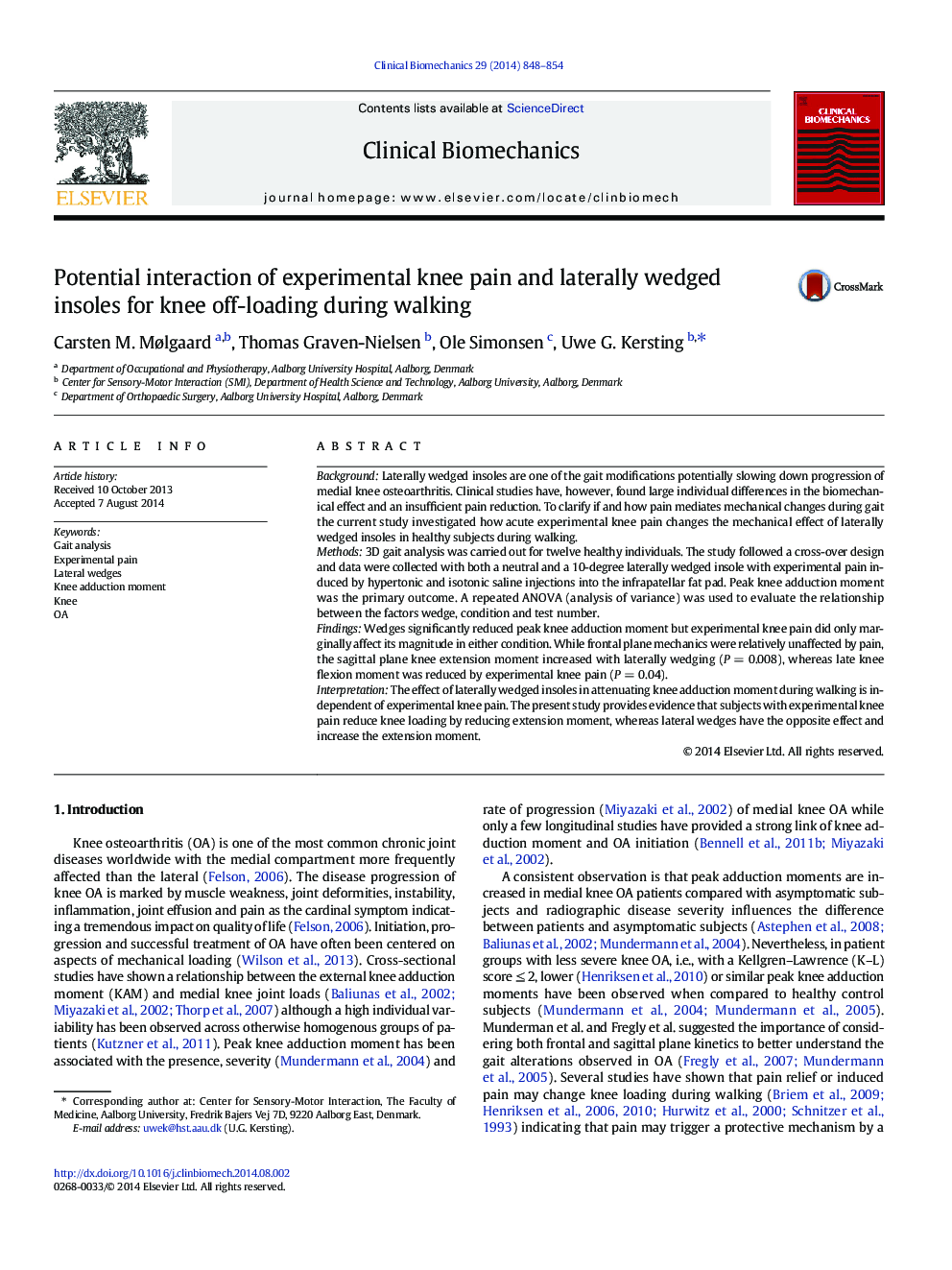| کد مقاله | کد نشریه | سال انتشار | مقاله انگلیسی | نسخه تمام متن |
|---|---|---|---|---|
| 4050363 | 1264924 | 2014 | 7 صفحه PDF | دانلود رایگان |
• 10-degree lateral wedges reduce knee adduction moment during walking.
• Experimental knee pain does not alter the wedge effect.
• Pain does not compromise a possible clinical effect of lateral inserts.
• Knee extension and flexion moments were affected by pain instead.
• Knee joint loading is not exclusively determined by frontal plane mechanics.
BackgroundLaterally wedged insoles are one of the gait modifications potentially slowing down progression of medial knee osteoarthritis. Clinical studies have, however, found large individual differences in the biomechanical effect and an insufficient pain reduction. To clarify if and how pain mediates mechanical changes during gait the current study investigated how acute experimental knee pain changes the mechanical effect of laterally wedged insoles in healthy subjects during walking.Methods3D gait analysis was carried out for twelve healthy individuals. The study followed a cross-over design and data were collected with both a neutral and a 10-degree laterally wedged insole with experimental pain induced by hypertonic and isotonic saline injections into the infrapatellar fat pad. Peak knee adduction moment was the primary outcome. A repeated ANOVA (analysis of variance) was used to evaluate the relationship between the factors wedge, condition and test number.FindingsWedges significantly reduced peak knee adduction moment but experimental knee pain did only marginally affect its magnitude in either condition. While frontal plane mechanics were relatively unaffected by pain, the sagittal plane knee extension moment increased with laterally wedging (P = 0.008), whereas late knee flexion moment was reduced by experimental knee pain (P = 0.04).InterpretationThe effect of laterally wedged insoles in attenuating knee adduction moment during walking is independent of experimental knee pain. The present study provides evidence that subjects with experimental knee pain reduce knee loading by reducing extension moment, whereas lateral wedges have the opposite effect and increase the extension moment.
Journal: Clinical Biomechanics - Volume 29, Issue 8, September 2014, Pages 848–854
